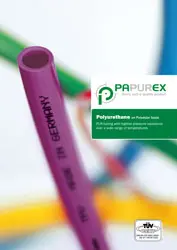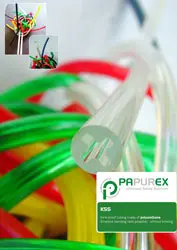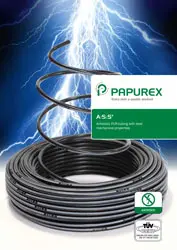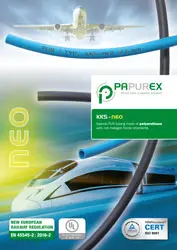Pneumatic tubing – get your customized offer
Choose the right one. Save money, time, and nerves.Why PAPUREX pneumatic tubing?
Tubing is tubing, isn’t it? No, it is not. Pneumatic tubing has a wide variety of use cases. Some may be under undemanding conditions. Low pressures, no environmental influences, and plenty of space for the installation. If this applies to your use case, you are good with high-quality standard tubing. If your application implies…

Mark Smieja, Sales Manager at PAPUREX
… the use of standard tubing might cost you time, nerves, and money. We at PAPUREX have more than 40 years of experience with the manufacture of polyurethane tubing. Receive your customized offer from our experts right now and avoid the cost of tubing that is not adapted to your specific use.
Pneumatic tubing that fits your needs
Here is a brief extract of our product range that contains more than 6.000 articles. If there is nothing that fits your purpose – we will create it for you.
Standard – simple but effective
If your application does not have any specific requirements, standard pneumatic tubing is your way to go. Our PAPUREX Standard range offers long lifecycles, a broad range of dimensions, and plenty of customization opportunities such as colors or printing.


KSS – anti-kink pneumatic tubing
Your tubing keeps kinking during the application process or during its use? Then the anti-kink tubing KSS is for you. Its unique inner profile prevents kinking and your nerves from breaking down.
A:S:S® – antistatic properties
In environments with explosion hazards or during the production of sensitive electronics the prevention of static charge is crucial. Does your tubing contribute to keeping static charge low? A:S:S® does and thus protects your valuable production.


KKS – for fire protection regulations
Does your application imply installation in environments demanding fire protection regulations, such as trains or aircraft? KKS has your back, and you don’t have to worry about penalties for not complying with the rules.
Receive your tailor-made offer now and get the tubing yor application deserves.
Do you already know what you need? Our experts are happy to send you an offer for the pneumatic tubing that really fits your needs.
Do you have questions or need help to find the perfect tubing for your purpose? Don’t hesitate to contact our team – we are happy to advise you!
Any questions?
Download the A:S:S® product flyer as a PDF document, or better yet, give us a call – we are happy to advise you.
